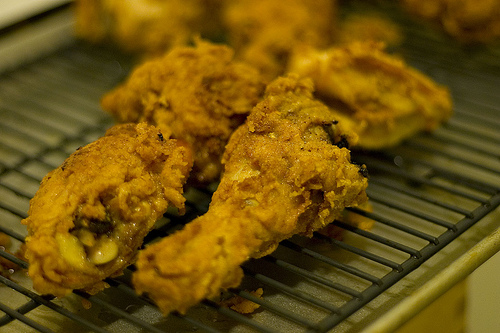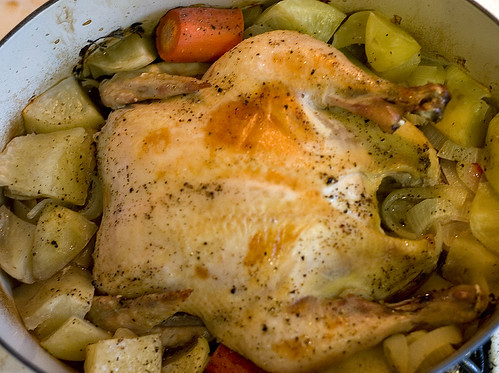 This past weekend we went camping at Yosemite National Park. We took my cousin’s daughters, Ivy and Makayla, with us. Differing from the majority of visitors, we stayed in the high country at Tuolomne Meadow.
This past weekend we went camping at Yosemite National Park. We took my cousin’s daughters, Ivy and Makayla, with us. Differing from the majority of visitors, we stayed in the high country at Tuolomne Meadow.
 Angela and I enjoy Yosemite a lot and visit at least once a year (depending on how often we can get reservations). Over the course of our visits, we’ve found that while we enjoy the valley, the real draw for us is the high country where the crowds (and the air) are thinner. The valley seems like a tourist attraction while the high country is more like a national park. We even noticed this as far as campers go: there are far fewer motor homes at Tuolomne Meadow than at the campgrounds in the valley. And, frankly, that’s the way we like it.
Angela and I enjoy Yosemite a lot and visit at least once a year (depending on how often we can get reservations). Over the course of our visits, we’ve found that while we enjoy the valley, the real draw for us is the high country where the crowds (and the air) are thinner. The valley seems like a tourist attraction while the high country is more like a national park. We even noticed this as far as campers go: there are far fewer motor homes at Tuolomne Meadow than at the campgrounds in the valley. And, frankly, that’s the way we like it.
When we go to Yosemite, we plan on hiking. This trip, we may have overdone it (please remember that we both live in the city and work in offices before passing judgment on our athleticism). When we first arrived, we set up camp, and then hiked to the top of Lembert Dome. This isn’t a hard hike (Angela and I had actually done it the previous year) but everything’s a bit harder at 8500 ft (and that’s just the starting elevation).
The second day we decided to hike to Cathedral Lake. It was listed as moderately difficult and it was only 7 miles round trip. Plus, the topographical map made it look like it only had a few steep parts and they wouldn’t be too long.
How wrong we were. Perhaps we were out of shape. Perhaps it was the elevation. Perhaps it was because we were sore from the previous day’s hike or from sleeping on the hard ground. It doesn’t matter why but we had a rather difficult time hiking their and back. The guidebook listed it as a 4 to 6 hour hike (depending on whether you just visit Lower Cathedral Lake or head on to Upper Cathedral Lake); it toot us 6 hours just to go to Lower Cathedral Lake and return.
Now, I probably come across as hating the hike. But I didn’t. Cathedral Lake is beautiful. The hike was beautiful. I just didn’t enjoy walking uphill for that long. I may not hike it again but I’m glad I did it the first time.

But this is a food blog, not a hiking blog. We did eat and we did eat well. The major difficulty of the trip wasn’t the hiking, it was the starting of a camp fire where there’s little oxygen. It may be that I’m incompetent when it comes to campfires (not unlikely really), but I could barely get one going Friday night and Saturday it took half a bottle of lighter fluid and a couple of Coleman fire starting things. It only got going Saturday night when I sent Angela to the camp store to buy charcoal (which went unused and we left for the next campers).
 Once the fire finally got started, I got to make something that I can rarely make properly because we have no grill (because we have no place to grill). This marinade is designed for grilling and for anything else it really doesn’t work well.
Once the fire finally got started, I got to make something that I can rarely make properly because we have no grill (because we have no place to grill). This marinade is designed for grilling and for anything else it really doesn’t work well.
I call this Southern Delaware BBQ Chicken but it doesn’t have a formal name per se. It’s a family recipe. It’s something that my grandfather, who lives in southern Delaware, used to make and now has passed on to his grandchildren. He even made custom grates for holding and turning the chicken. Part of my childhood was eating barbecued chicken with corn on the cob and potato salad on hot summer days. We always had watermelon for dessert. A few years ago, my grandfather made sure to teach some of his grandchildren (myself included) how to properly cook the chicken.
Given I had a chance to finally grill something, I decided that I needed to make the chicken. To be honest, this isn’t my grandfather’s rendition as I had didn’t have the hours (or the equipment) to grill it to his standards. But, it’s still good. I hope you can enjoy this as my family has. And my apologies to my cousins if I’m letting out any family secrets.

Southern Delaware BBQ Chicken
4 chicken quarters
Marinade:
5 tsp salt
1/4 tsp pepper
1 1/2 tsp poultry seasoning
1/4 tsp paprika
1 cup cider vinegar
1 egg, well-beaten
1 cup vegetable oil
- Trim the chicken of excess fat.
- To make the marinade: Mix together the dry ingredients. Add the vinegar and the egg and whisk to combine. Whisk in the cooking oil.
- Pour the marinade over the chicken and refrigerate for 1 day.
- Grill the chicken, turning regularly and basting with the excess marinade regularly, until cooked through.
- Serve immediately
Serves 2 to 4.



























